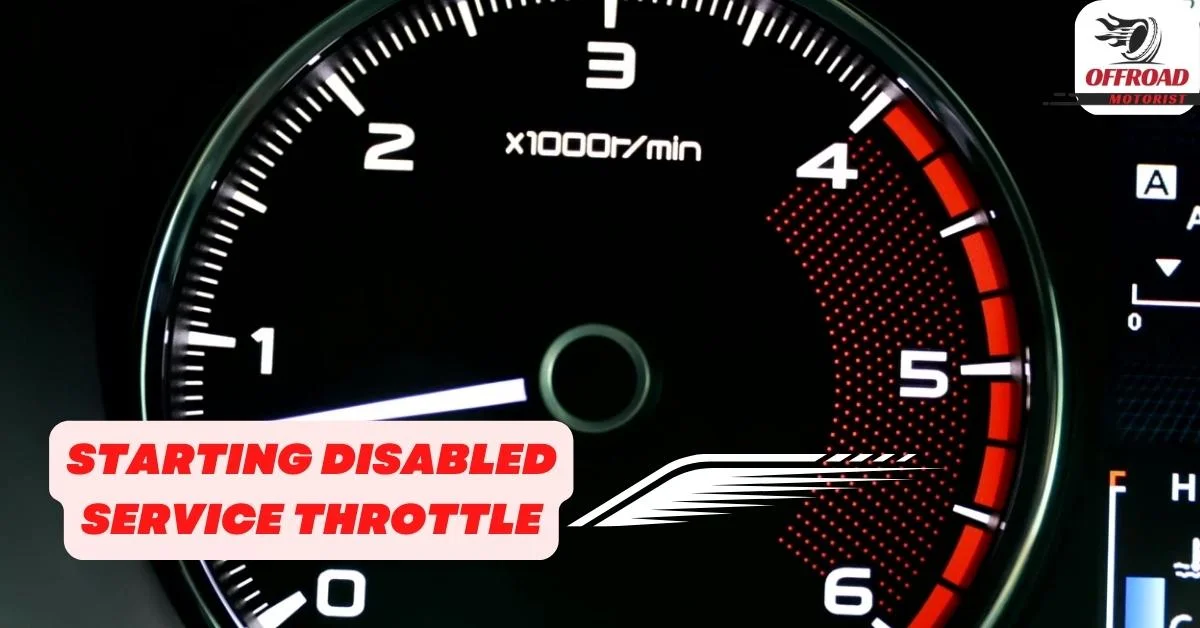Chevy 2500HD Transfer Case Problems [Causes, Symptoms, and How to Fix]
If you own a Chevy 2500HD truck, you know how important the transfer case is for smooth driving and off-road adventures. However, transfer case problems are common in these trucks, leading to frustrating and costly repairs if not addressed promptly.
In this blog post, we’ll explore the common transfer case problems that can occur in Chevy 2500HD trucks and provide practical solutions to help you get your truck back on the road in no time.
Keep reading to learn more about keeping your Chevy truck running smoothly and avoiding Chevy 2500HD transfer case problems in the future.
Common Chevy Transfer Case Problems
Chevy transfer cases are integral to the vehicle’s drivetrain, distributing power to the front and rear wheels. While these components are designed to withstand heavy use and abuse, they are not immune to wear and tear and may develop problems over time.
Here are some of the most common Chevy transfer case problems:
01. Leaking transfer case fluid:
One of the most common issues with Chevy transfer cases is leaking fluid. This can occur due to a damaged seal, worn gasket, or a crack in the housing. When the transfer case fluid leaks, it can cause damage to other components and lead to costly repairs.
02. Noisy operation:
Another common issue with Chevy transfer cases is noisy operation. This can include grinding, whining, or humming sounds. Worn bearings, damaged gears, or insufficient lubrication can cause these noises.
03 Difficulty shifting:
A common complaint among Chevy transfer case owners is difficulty shifting between gears. This can be caused by worn shift forks, damaged synchros, or a damaged shift rail.
04. Failure to engage:
In some cases, Chevy transfer cases may fail to engage, leaving the vehicle stuck in two-wheel drive. A faulty shift fork, a damaged chain, or a worn clutch can cause this.
05. Electrical problems:
Chevy transfer cases equipped with electronic controls may experience issues with the sensors, solenoids, or other electrical components. These problems can cause the transfer case to malfunction, leading to drivability issues and potential damage to other components.
To address these common problems, it is essential to perform regular maintenance on the transfer case, including changing the fluid, inspecting the seals and gaskets, and checking for any signs of wear or damage.
Note: Timely attention to transfer case issues can prevent further damage to the vehicle and ensure its safe operation.
Symptoms of Chevy 2500HD Transfer Case Problems
Transfer case problems can cause a range of symptoms that can affect the drivability and safety of a vehicle. Here are some common symptoms of transfer case problems to watch out for:
01. Strange noises:
Strange noises from under the vehicle are one of the most noticeable transfer case problem symptoms. These noises can include grinding, whining, clunking, or banging sounds and may vary depending on the speed and position of the vehicle.
02. Difficulty shifting gears:
Transfer case problems can make it difficult or impossible to shift gears smoothly. You may experience grinding or resistance when shifting, or the gears may slip out of position.
03. Vibration:
If the transfer case is damaged or out of alignment, it can cause vibrations felt through the steering wheel, pedals, or floorboard. These vibrations may be more noticeable at certain speeds or when turning.
04. Warning lights:
If the transfer case is equipped with electronic controls, it may trigger warning lights on the dashboard if there is a problem. These lights may include the Check Engine Light, the 4WD warning light, or the service indicator.
05. Loss of power:
Transfer case problems can cause a loss of power to the wheels, resulting in reduced acceleration, slower speeds, or difficulty climbing hills.
06. Fluid leaks:
A leaking transfer case can cause fluid loss, leading to reduced lubrication and eventual failure of the component. When checking the transfer case fluid, you may notice a puddle of fluid under the vehicle or a low fluid level.
06. Difficulty engaging 4WD:
If the transfer case engages the 4WD system, you may experience difficulty getting the vehicle into 4WD mode. This may be accompanied by strange noises, vibrations, or a failure to engage.
Note: Ignoring transfer case problems can lead to further damage and potentially dangerous situations on the road.
Causes of Chevy 2500HD Transfer Case Problems
Transfer cases can develop problems due to a variety of reasons. Here are some common causes of transfer case problems:
01. Lack of maintenance:
One of the primary causes of transfer case problems is a need for regular maintenance. Failure to change the transfer case fluid, inspect the seals and gaskets, or perform other routine maintenance tasks can lead to wear and tear and accumulating dirt and debris inside the component.
02. Overuse or abuse:
Transfer cases are designed to withstand heavy use and abuse, but excessive use or abuse can cause damage to the components. This can include towing heavy loads, off-road driving, or driving at high speeds for extended periods.
03. Fluid contamination:
Transfer case fluid can become contaminated with dirt, debris, or other foreign substances. This can lead to a loss of lubrication and cause damage to the internal components of the transfer case.
04. Seal or gasket failure:
The transfer case is sealed to prevent fluid leaks and contamination. If the seals or gaskets become worn or damaged, fluid can leak out, or dirt and debris enter the component.
05. Improper installation or repair:
If the transfer case is not installed or repaired correctly, it can cause damage to the component or lead to problems with the drivetrain. This can include improper alignment, incorrect fluid level, or incorrect torque on the bolts.
06. Component failure:
The failure of internal components such as bearings, gears, chains, or shift forks can also cause transfer case problems. These failures can be due to wear and tear debris damage or manufacturing defects.
Note: It’s essential to address any transfer case problems as soon as they arise to prevent further damage and ensure the vehicle’s and its occupants’ safety.
How to Fix Chevy 2500HD Transfer Case Problems
Chevy transfer case problems can be frustrating and potentially dangerous if addressed. Here are some steps you can take to fix Chevy transfer case problems:
- Diagnosis: Identifying the root cause of transfer case problems is crucial to determine the appropriate fix. Professional mechanics can use specialized tools, such as diagnostic scanners or pressure gauges, to diagnose transfer case problems accurately.
- Fluid change: Regular fluid changes can prevent transfer case problems and extend its lifespan. Changing the transfer case fluid every 30,000 miles or as recommended by the vehicle’s owner manual is recommended.
- Inspection: Regular inspection of the transfer case, including visual inspection for leaks, cracks, or damage, can help identify problems early on and prevent further damage or safety issues.
- Seal and gasket replacement: If the transfer case leaks fluid, replacing the damaged or worn-out seal or gasket can solve the problem.
- Gear replacement: If the transfer case is making noise or grinding, replacing the worn-out gears, bearings, or synchronizer rings may be necessary.
- Transfer case actuator replacement: If the transfer case has difficulty shifting into the 4WD mode, replacing the actuator or shift linkage may be necessary.
- Driveshaft repair or replacement: If the transfer case is causing vibrations, repairing or replacing the driveshaft may be necessary.
By following these steps, you can address Chevy transfer case problems and restore the proper function of your vehicle’s drivetrain. Regularly maintain to prevent future issues and keep your vehicle running smoothly.
DIY repair option:
While some transfer case problems may require professional help, some DIY repairs, such as changing the transfer case fluid or replacing the seal or gasket, can be done by vehicle owners with basic mechanical skills and tools.
However, following the manufacturer’s instructions and safety precautions is essential to avoid further damage or injury.
Upgrade options:
Consider upgrading the transfer case or other drivetrain components to enhance your vehicle’s off-road capabilities or improve its durability.
For example, installing a high-performance transfer case or a locking differential can improve traction and torque distribution, while upgrading the driveshaft or axles can improve strength and durability.
Preventive measures:
To prevent transfer case problems from occurring or reoccurring, you can take several preventive measures, such as avoiding overloading your vehicle, driving on harsh terrain, or neglecting regular maintenance.
Additionally, using quality transfer case fluid, avoiding extreme temperatures, and driving defensively can prolong your transfer case’s lifespan and prevent premature wear or damage.
Chevy Silverado Transfer Case Recall
In 2017, General Motors (GM) issued a recall for specific Chevy Silverado models due to transfer case issues. Here are the details of the recall:
- Affected models: The recall affected Chevy Silverado 1500, 2500, and 3500 models from the 2014-2017 model years.
- Reason for the recall: The transfer case may electronically switch to neutral without input from the driver. This can cause a loss of power to the wheels and increase the risk of a crash.
- Number of vehicles affected: Approximately 690,000 vehicles were affected by the recall in the United States.
- Notification to owners: GM notified affected owners by mail starting in December 2016. Owners were instructed to bring their vehicles to a dealer to have the transfer case software updated.
- Repairs made: Dealers updated the software in the transfer case control module to prevent it from switching to neutral without input from the driver. The repairs were made free of charge to the owners.
- Follow-up: GM monitored the recall to ensure all affected vehicles were repaired. The National Highway Traffic Safety Administration (NHTSA) also monitored the recall to ensure that GM complied with all safety standards.
If you own a Chevy Silverado from the affected model year and still need to update the transfer case software, you must contact a dealer as soon as possible to repair it.
Note: Recall repairs are performed free of charge, and ensuring your vehicle’s and its occupants’ safety is crucial.
FAQs on Chevy Silverado Transfer Case Problems
In this section, we’ll address some frequently asked questions about Chevy Silverado transfer case problems. Let’s get started.
How much does replacing a transfer case on a Chevy Silverado cost?
The cost of replacing a transfer case on a Chevy Silverado can vary depending on the model year, the severity of the damage, and the cost of parts and labor. However, it typically ranges from $1,500 to $2,500.
Is it safe to drive a Chevy Silverado with a bad transfer case?
Driving a Chevy Silverado with a bad transfer case is not recommended, as it can cause further damage to other parts of the vehicle and may lead to a breakdown or an accident.
How long does a transfer case last on a Chevy Silverado?
The lifespan of a transfer case on a Chevy Silverado can vary depending on the model year, driving conditions, and maintenance schedule. However, they typically last around 100,000 to 150,000 miles before needing replacement or repairs.
How can I prevent transfer case problems in my Chevy Silverado?
To prevent transfer case problems in your Chevy Silverado, it is essential to follow the recommended maintenance schedule, use the correct fluids, avoid rough driving conditions, and have any issues diagnosed and repaired promptly.
What is the recommended maintenance schedule for the transfer case in a Chevy Silverado?
The recommended maintenance schedule for the transfer case in a Chevy Silverado can vary depending on the model year, but it typically involves regular fluid changes every 30,000 to 50,000 miles.
How do I diagnose a transfer case problem in my Chevy Silverado?
To diagnose a transfer case problem in your Chevy Silverado, you may need to have a mechanic perform a visual inspection, listen for unusual noises, check for leaks, and perform a test drive to assess any issues with shifting or four-wheel drive engagement.
Can I replace the transfer case on my Chevy Silverado myself, or do I need a professional mechanic?
Replacing a transfer case on a Chevy Silverado can be a complex process requiring specialized tools and knowledge. It is recommended to seek the assistance of a professional mechanic with experience working on Chevy Silverado trucks.
Final Words on Chevy 2500HD Transfer Case Problems
If you suspect your Chevy 2500HD transfer case is experiencing problems, it’s essential to identify the root cause and take appropriate action to repair or replace the affected components.
In the case of the Chevy Silverado, a recall was issued to address transfer case issues in specific models, and affected owners were instructed to have the transfer case software updated at a dealer free of charge.
By taking proper care of your vehicle’s transfer case, you can ensure its proper function and avoid potential safety hazards on the road.

![Chevy Transfer Case Interchange Chart [Everything you need to Know] chevy transfer case interchange chart](https://offroadmotorist.com/wp-content/uploads/2023/03/chevy-transfer-case-interchange-chart-150x150.jpg)




![Oil Pressure Low Stop Engine Chevy Silverado [Causes and Solutions] Oil Pressure Low Stop Engine Chevy Silverado](https://offroadmotorist.com/wp-content/uploads/2023/03/oil-pressure-low-stop-engine-chevy-silverado-150x150.jpg)





